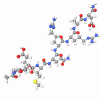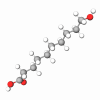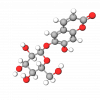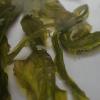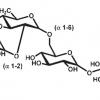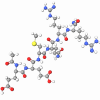s-Mu-Conotoxin CnIIIC is a synthetic oligopeptide derived from one of marine cone snails' toxins also called conotoxins or conopeptides. μ-CnIIIC is a 22 amino acid length conotoxin polypeptide obtained from Conus consors which exhibited muscle relaxing properties in tests on rodents. It has the following sequence PCA-Gly-Cys-Cys-Asn-Gly-Pro-Lys-Gly-Cys-Ser-Ser-Lys-Trp-Cys-Arg-Asp-His-Ala-Arg-Cys-Cys-NH2.
In humans, the rapid electrical signal from neurons to muscles (for contraction) is transferred thanks to special sodium channels called voltage-gated. There are nine types of voltage-gated sodium channels with different action potentials (different ions concentration in and outside of the cell) and different appearances in tissues. So, if a particular toxin is selective which means that it can block only one type of voltage-gated sodium channel, it can be safely used for the management of an exact physiological function.
s-Mu-conotoxin CnIIIC is very selective to NaV 1.4 sodium channels which are distributed in muscles and does not block other types of channels e.g. NaV 1.5 in the heart, NaV 1.8 in dorsal ganglia, or neuronal NaV 1.6-1.7 channels. Thus, it is a safer ingredient and can block only muscular contractions without adverse effects on other organs and tissues.
Blocking mimic muscles, s-Mu-Conotoxin CnIIIC leaves a long-term Botox-like effect, relaxing facial muscles and fighting against mimic wrinkles. Incorporates in high-end skincare applications, this conopeptide exhibits a significant anti-aging effect with just a topical application and without injections or invasive procedures.Chem/IUPAC Name: L-Cysteinamide, 5-oxo-L-prolylglycyl-L-cysteinyl-L-cysteinyl-L-asparaginylglycyl-L-prolyl-L-lysylglycyl-L-cysteinyl-L-seryl-L-seryl-L-lysyl-L-tryptophyl-L-cysteinyl-L-arginyl-L-.alpha.-aspartyl-L-histidyl-L-alanyl-L-arginyl-L-cysteinyl-, cyclic (3.fwdarw.15),(4.fwdarw.21),(10.fwdarw.22)-tris(disulfide)


